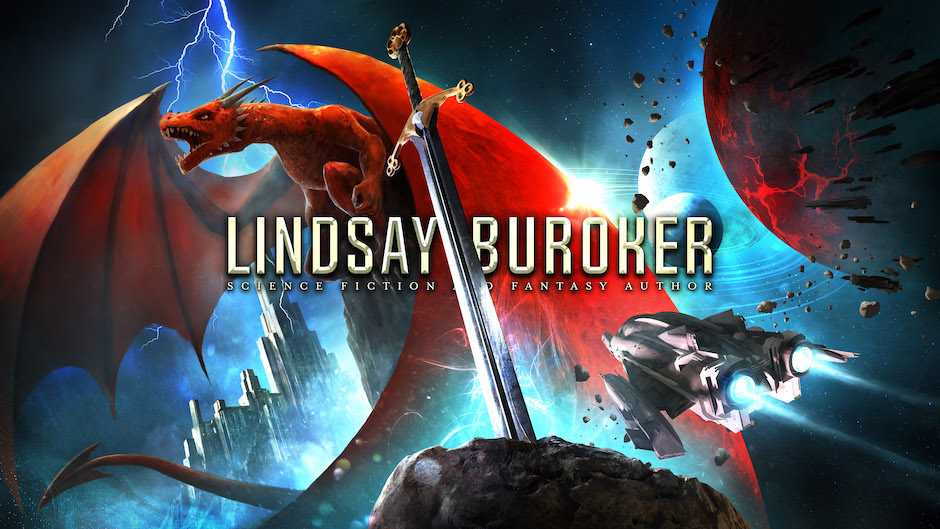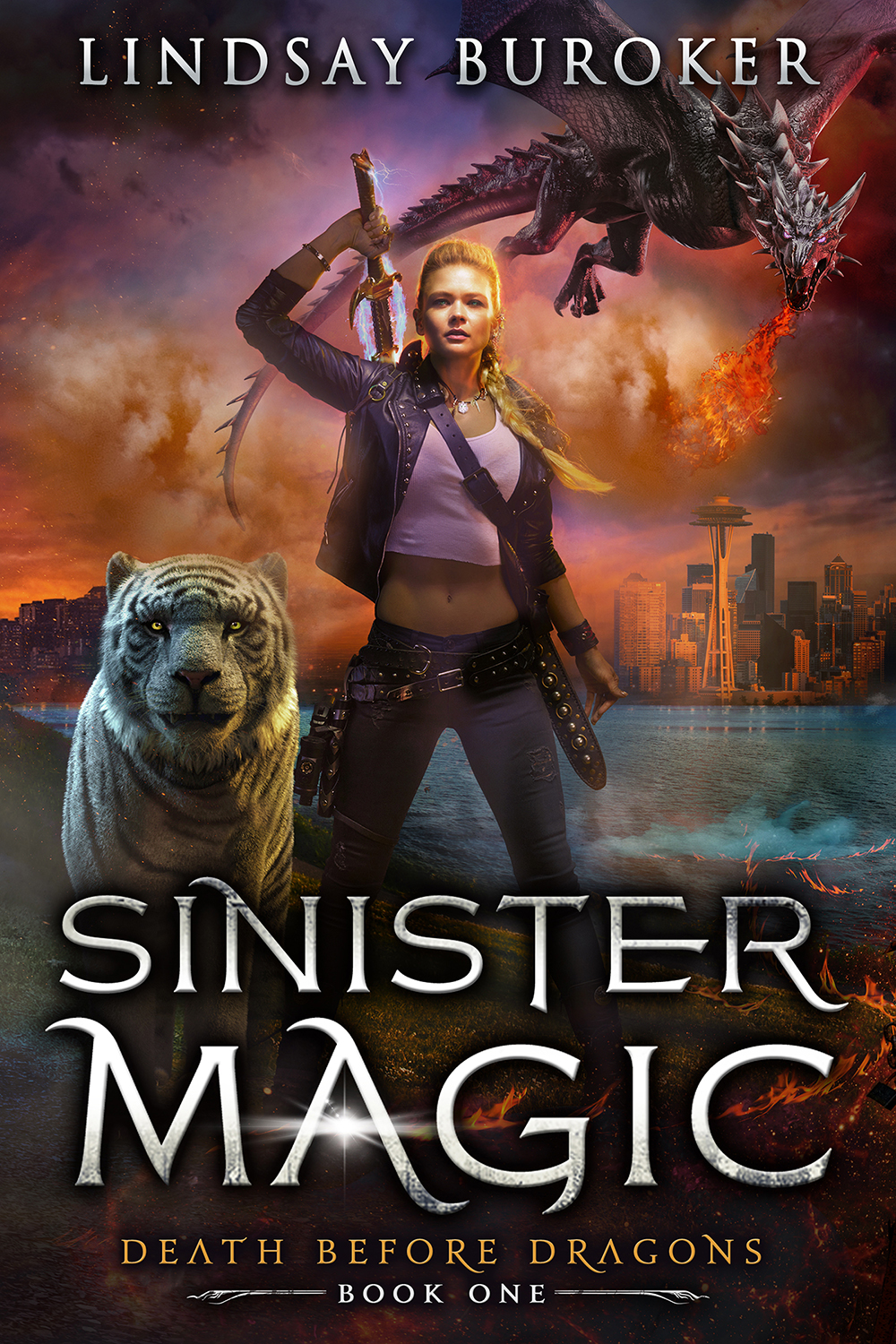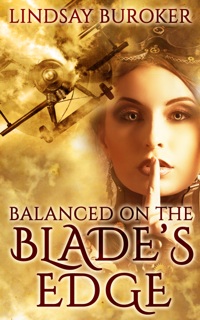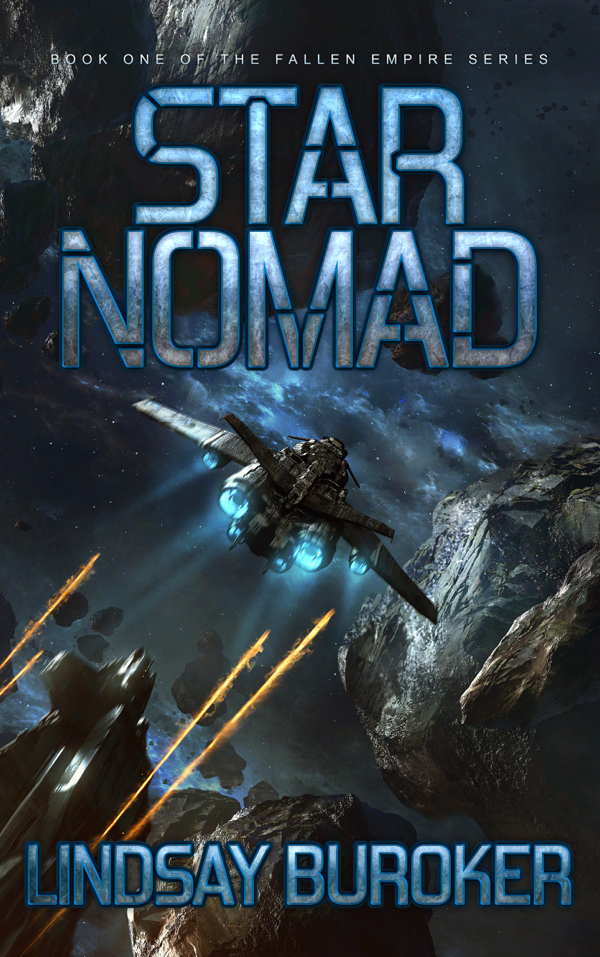You’ve published your ebook, done book blog tours, pimped your work on Twitter and Facebook, and you even got such-and-such favorite author to provide a blurb. Now, where the heck are the sales?
Hmm.
It’s a crummy reality, but, when it comes to ebooks, there’s more competition these days.
Those clairvoyant authors who were smart enough to get into the Kindle Store back in 2009, when so few mainstream titles were available as ebooks, enjoyed the perks of a less crowded marketplace. Today every new traditionally published book is available as an ebook (and many of the older ones are out there too), and there are tens of thousands of self-publishers adding their titles to the virtual stores.
Obscurity has always been the enemy, but there have been tricks (let’s call them opportunities, so as not to ruffle feathers) that allowed early adopters to profit handsomely. Those tactics seem to be losing viability now though. Let’s take a look at a couple of recent changes that may make it tougher to break in as an indie author.
The fall of the 99-cent ebook?
A couple of years ago, Amanda Hocking came on the self-publishing scene with several YA ebooks priced at 99 cents (for book 1s) and $2.99 (for subsequent books) and had legendary sales that led to a legendary two-million-dollar traditional publishing deal.
This was before I started self-publishing, but I understand that she was one of the first to take advantage of the 99-cent price point. Most indies were sticking to $2.99 and up because Amazon made $2.99-$.9.99 the point at which authors could earn the highest royalty percentage. (You have to sell six times as many books at 99 cents to earn the same $2 you’d get on a $2.99 book.) But readers were all over those early 99-cent ebooks because they were such a bargain, and numerous self-published authors leaped to the tops of the bestseller lists.
Would-be prognosticators said this signified a “race to the bottom,” a scenario in which all ebooks would eventually be 99 cents or even free, leaving authors a pittance of an income for all their work. Well, Amazon, perhaps not enamored with making pennies per sale, has made some changes to its ranking algorithms. A few weeks ago, we talked to indie author and stats junkie Edward Robertson about those updates and learned that Amazon has started weighting books based not only on sales history but on price. This may change one day, but, right now, all other factors being equal, higher priced books enjoy more prominent ranking positions in the popularity lists.
Though this is doubtlessly about Amazon’s bottom line, it’s a bit of a blow to indies, who have, for the last couple of years, used price to give their books an advantage over traditionally published titles in the Kindle Store. Technically, an indie can put a book out without spending a dime (though hiring an editor, at the least, is recommended), meaning that even 99-cent ebooks can result in tidy profits, whereas traditional publishers must put a lot more money into the process and can’t afford price points like that, at least not in the long run.
Now, though, it seems that lower prices are being penalized with lower visibility, at least at Amazon, and at least if one’s goal is to spend time on bestseller lists. These changes may eventually reach beyond the Top 100, too, meaning 99-cent books would be less likely to be mentioned in Amazon’s recommendation emails and in other books’ also-boughts. (I’d love to hear from other authors on this. I haven’t personally experienced any drop in sales from what I’m talking about today, because I’m not in KDP Select (next topic), and my novels are $4-$5 instead of 99 cents.)
KDP Select’s unintended “perk” disappearing
The 99-cent pricing strategy has been around for a while. KDP Select is relatively new, but accounted for some meteoric rises from previously obscure authors.
When Amazon rolled out the program last Christmas, indie authors flocked to it in droves, not because the lending library deal sounded that wonderful to anyone, but because Select allowed books to be listed as free for a few days each quarter. Many of us had witnessed a “feature” (one I maintain was likely unintended) where books that went free and received a lot of downloads leaped up the paid sales charts when they returned to their usual price point. This was because those free downloads were counted as sales. Amazon rewards books that sell well with more visibility (a lot more visibility), so you had previously unknown titles jumping into the Top 1000 for extended stays because, to Amazon’s algorithms, they had “sold” so well over such a short period of time.
Again, I don’t have any person experience with this phenomenon, as the books I’ve made free have stayed free (by using price-matching rather than enrolling in Select), but I’ve seen a lot of people grumbling on the Kindleboards and in other places that KDP Select isn’t worth anything to them now that this “feature” has been fixed (or at least majorly downgraded).
In other words, another trick indies were using to out-perform the traditionally published novels (from what I’ve read and seen in the Kindle Store, few Big 6 publishers were willing to sign the exclusivity clause Amazon required for participation in Select).
Will there be other tricks one can use? Maybe so. There are always rewards out there for those who pay attention and can get in early on things. But, it seems that, more than ever, self-published authors will have to put out high quality books and work on building up a loyal readership over time, rather than depending on gimmicks to launch their careers. Yeah, that’s how it always should have been, but you can’t fault folks for taking advantage of opportunities along the way. If KDP Select had come at a different point in my self-publishing career (i.e. a year earlier, when I was just getting started) or hadn’t required exclusivity, I’m sure I would have tried the game too.
What does still work?
As I mentioned, my Book 1s are permanently free. It works. Many of the people who grab them go on to pay for the other books in the series. In my opinion (and thanks to awesome readers, I have the sales numbers and fan letters to back up my opinion), giving away free work is a great way to build a readership. People get to try your stories without risk, and, in my experience, it’s a win for the author as well (so long as you have follow-up books for the reader to go on to buy).
Some will argue that free is a gimmick, too, especially since you can’t upload a book for less than 99 cents at Amazon (you can at iTunes, Kobo, and, via the Smashwords backdoor, Barnes & Noble — you have to wait and hope Amazon will price-match). I suppose that’s true, but readers have been finding new favorite authors by borrowing books from friends (free) or checking them out from libraries (also free) for ages. It’s a well-established model. Being free in the online stores just means being in a much larger library with a lot more visibility.
But I digress…. I do think that everything from increased competition to decreased effectiveness of pricing gimmicks has made it harder to break in at Amazon, but it’s still going to be possible to establish yourself and make a career out of self-publishing. You just can’t expect it to happen anymore with the first book or in the first year.
If you’re new to my blog, please check out other posts I’ve written on building a platform and a readership:
- 3 Selling Tactics Authors Can Borrow from the Internet Marketing Gurus
- Newsletters 101: Email Marketing for Authors
- What the Heck is Author Branding and How Do You Do It Anyway?
- The Importance of Keeping in Touch with Fans (and how to find them in the first place)
All right, that’s probably enough reading material for one day! What are your thoughts on the recent changes at Amazon and breaking in today as a new indie author?




Very interesting, I completely missed the boat on the Kindle Select gimmick! I resisted putting up freebies for a long time and I have sold decently (read 2-5 titles/month) on short stories and novellas, pricing shorts at .99 and novellas at 2.99. However, I just signed up for the July Smashwords sale, which marks almost everything down to free and am seeing a huge jump in ‘sales’ already. I’ll have to see if it leads to increased sales across the board. Here’s hoping!
*crosses fingers*
I do have one criticism of making Emperor’s Edge free, it keeps me from sleeping. I downloaded it to my kindle at midnight and was up until five in the morning finishing it! 😉
Haha, sorry for keeping you up, Byron!
Good luck with the Smashwords sale. I always make something else free during those and usually get some extra sales from the non-free books too. 🙂
I got in late-ish on the KDP Select boom. It was a massive help and then it went flat. Didn’t renew my books for it. Last novel came off select a few days ago. Wish I had had more books out to sustain the boom but I was months behind schedule from helping family through a crisis. I’m sure something else will come along. I’m looking forward to getting my book up on Kobo when they open it up.
It looks like you’re getting some new stuff out there, though! I try to remember that there’s no hurry and that this is a long-term process. The nice thing about ebooks is that there’s no going out-of-print, so the books we write today can still add to our income, ten or twenty years from now.
I try to remember that. It’s so true. But I’m also so impatient when my plans get disrupted. Was going to have six books out by now. Sigh. Must focus on now, must focus on now…
I can vouch for dropping book 1 of a series to free as well. Since going this route, I’ve been getting about 1200 free downloads and 100 sales of book 2 a month, which is pretty cool considering I’ve done practically zero marketing. Once I’ve completed the series, maybe I’ll try actively selling people on it or something…
Yeah, I hear that book promotion stuff can be helpful! 😀 And it’s easier (less in-your-face), I find, when you’re advertising a free ebook instead of trying to get people on Twitter or Facebook to drop $8 (or even $2.99) on someone they’ve never read before.
Offering the first novel free is a win for the author IF it is good enough to generate more business with following novels. That said if a novel is weak enough to not generate much pull through, they’d probably get none without the teaser.
“self-published authors will have to put out high quality books and work on building up a loyal readership over time, rather than depending on gimmicks to launch their careers.” This is as it should be. Amazon is continuing to do a great job in my opinion.
This is a really insightful summary, Lindsay.
Those who got there first could take advantage of the novelty, just as with any market. Now that others are leaping in, it’s about quality and marketing.
The cream will continue to rise to the top, but folks now have to realize that cream doesn’t consist solely of writing.
Thank you for putting time and effort into this blog, Lindsay. It’s one of the more informative ones for indie writers. I also became one of your “1000” recently. 🙂
You mentioned that you could set pricing on Kobo. How in the world do you get into Kobo as a publisher without going through Smashwords? I generally like Smash, but lately their delays and screwups getting my stuff up on Kobo have been maddening.
Thanks, Sawyer!
Smashwords is beta testing a new portal so authors can self-publish directly. I uploaded my fourth EE novel there in June, and it was live within 24 hours. They’re hoping to open it up to everyone very soon. You’ll be able to select “free” as an option without having to go through Smashwords.
Kobo opening up their selfpublishing portal is brilliant. They’re making a lot of good decisions these days. I think Kobo has a future.
Great Post… When I saw the title roll across my twitter feed I was concerned, seeing as I will be trying to “break in” soon. I’m getting my book edited right now, and then off to the races. When I first decided that I would self publish, I read all the success stories and figured I would be a ba-jillionaire by the end of year one. The more I read about self pubbing, the more it became clear that success needs to be measured in the long term. I am now of the mindset that every time I publish something it is like I’m putting a small investment in a retirement fund, I put it out there and let it grow slowly over time and continue to “invest” until I reach critical mass, which will unlikely be in the first few years. I’m good with that, at least the idea of being a published author is no longer a dream, it is simply a goal.
Informative post, as always, Lindsay. But I’d be curious to know how phenomena like “Fifty Shades of Grey” and “The Mill River Recluse” can be explained. Both were self-published books by first-timers that shot up to the top of the charts. First book, first year. Not that I expect this to happen with my books, but I’m always curious about the outliers. Your thoughts?
I only pay attention to the epic fantasy bestseller list, so those aren’t books I’ve watched take off, but if authors can figure out how to get into the Top 10 or so of a popular category (often through advertising or, more recently, through a KDP Select free run), and if they have a bargain price, an awesome cover and a blurb that appeals to a wide range of readers (and if the story itself doesn’t suck), there’s a chance the book will stay up there and really do well. Wool, for example, I believe first took off after a KDP Select run and the big post-free sales ranking boost.
My third and fourth books made it into the Top 10 of epic fantasy right after release (it takes about 200 sales a day to be there in that category). Mine don’t stay up there long, though, even though the reviews are largely good. They’re not bargain priced and aren’t really epic fantasy either (I suspect a lot of authors have the problem where there’s not a category on Amazon where their books truly fit, so being visible in that category isn’t as much of a boon as it would be for others). I’ve seen other books make it up there though and then stick. In epic fantasy, having a dragon on the cover seems to be key. 😛
http://en.wikipedia.org/wiki/Fifty_Shades_of_Grey
Technically, 50 Shades was free for a while on fanfiction.net as Twilight fanfic – she already had a big fan base when she pulled it, changed the names, and got published. Somewhere on the internet is a review that claims plagiarism software compared it to the original, Twilight-fanfic version and it came back more than 80% positive.
It’s wildly popular with Team Edward, so again, huge fan base with Twilight Moms telling each other about it. I don’t think that can be expected for most first books!
Hi, Lindsey. As a career, self-supporting writer and someone who now works with self publishing authors as well, I’ve been watching this entire indie movement and shift to ebook from its inception and I’m seeing quite a few posts about how things have changed for ebook publishing. My take is that things are always going to be changing, in terms of what works and does not work for authors in the ebook world of today. Creativity in this arena is going to pay off, I suspect. We don’t yet have a single ‘go-to’ route to new readers that works the way the ‘new release’ shelf at the corner bookstore used to work in the legacy days. But I think, when you look beyond the media hype, that not much has really changed from the legacy days — except for one critical element. What has not changed is that a few authors connect with a ton of readers and go ‘blockbuster’, a medium percentage establish a solid career, and a lot of authors never do connect with many readers. Their books may be poorly written, poorly marketed, or simply not be something that most readers really enjoy. That pretty much describes the legacy publishing world I ‘grew up’ in as an author — a few blockbusters, a modest ‘mid list’ (that was me), and a lot of no-shows. BUT….the big difference? NY marketing no longer determines whether or not you even get the chance to reach readers in the first place. As a reader and an author, I like THIS new change a LOT.
Thanks for the thoughtful comment, Mary! Another change is that, with the 35-70% royalty rate on ebooks (when you self-publish) is that you can actually make a nice living as a mid-list author.
This comparison of a mid-list indie fantasy author and a mid-list traditionally published fantasy author is pretty encouraging stuff: http://write2publish.blogspot.com/2011/04/midlist-authors-traditional-or-self.html
Of course, we don’t know if the royalty rates will stay the same indefinitely, but it’s definitely a great time to be an author.
I totally agree, Lindsey, about ebook and indie for midlist careers. I just finished teaching a week at the Clarion West Writers Workshop, a six week long writers workshop, and my advice was to look at indie as the backbone of a career.
I’ve been reading your posts all morning and wanted to thank you for putting together such well constructed articles on all these indie topics. I’m new to this (The Emotion Thesaurus went live in May) and so I’m still trying to improve on how to market and reach a readership, and how to use the resources I have most effectively.
Appreciate all your time and insight here!
Angela
Pingback: A Week In Links | Laney McMann
I’m working on my second novel now, and am carefully guarding the sale price of the first–for now. I think you have a good strategy in giving away the first one.
High quality books should always be the norm for us writers. Period. That’s what is going to help people earn a living and add to their fan base.
I don’t worry about Amazon gimmicks ’cause they are the huge company and I’m just a little fish in a big, big pond. However, I appreciate what they and others have done for us Indie authors in opening a way for us to share our work.
I don’t think that enrolling your book in KDP Select is a “trick” or “gimmick.” The purpose of putting your book in KDP Select is to take advantage of Amazon’s lending fund. Basically, Kindle users pay a monthly fee to be able to borrow as many books as they want. It’s like having an exclusive library card. That money goes into a pool that authors whose books are enrolled in KDP Select get a percentage of if their books get borrowed during their ninety-day period of enrollment. The object is that your book makes more money because of that fund than it would with the royalties if it gets a significant amount of borrows. It’s kind of a gamble, because you’re losing, say, Smashwords sales during those ninety days, but if your book gets borrowed a lot through the Amazon lending program, you could make a lot more money.
I also don’t think it’s gaming the system if Amazon allows your promotion day sales to increase your rankings. If you’re using different IPs and devices and downloading it yourself thousands of times, then yeah, that would be gaming, but if it’s happening organically through hard work and promotion, that’s the same as if your book was $5.99 and rose to #4,000.
I don’t think that enrolling your book in KDP Select is a “trick” or “gimmick.” The purpose of putting your book in KDP Select is to take advantage of Amazon’s lending fund.
Except that’s not why people were signing up. If all people wanted was to make a few extra bucks in the loan program you wouldn’t see so many people whining about how Select “doesn’t work” now.
They were hoping they could get 10,000 downloads on their free days and that those would count like sales, which they did for a while, and that their books would jump up into the Top 500 or 1000 overall in the kindle store. They’d then ride that until the momentum wore off. With some of the good books, they’d stick, but most of them eventually dropped back down because they weren’t good books to start with. They just had cool cover art.
I agree that this was a gimmick, and I’m glad Amazon changed things so free downloads don’t count for much now.
Pingback: Friday Features #12 | Yesenia Vargas
Pingback: Writing Blog Treasures 7~7 | Gene Lempp ~ Writer
Lindsay – I think on the day you posted this I was trying to be diligent, and rather than have fun reading blogs, figuring out how to see the Kindle Lending library for kid’s books (without currently being on Amazon prime), analyzing it, and deciding for about the tenth time not to enroll.
I could have *saved* myself some time if I had “wasted” time catching up on my best blogs! However, it is still good to see confirmation of my decision. 🙂 As always, thanks for your analysis and on-going advice.
So, we have to slog through the old-fashioned way. My free book led to sales of my other story. Not gang busters, but steadier than it was.
For now, I’m just concentrating on writing and getting more out there.